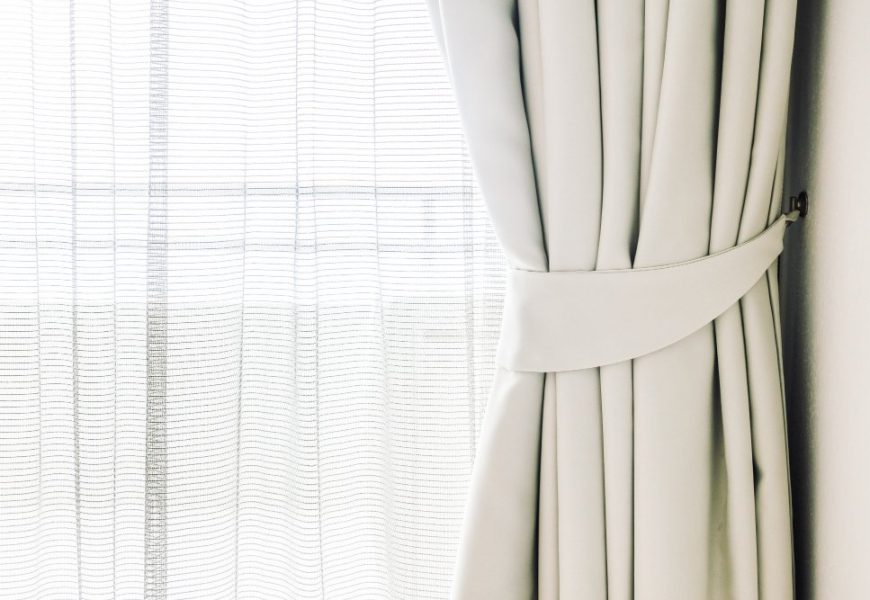Selecting the perfect curtain fabric is a crucial decision that can dramatically impact the aesthetics and functionality of your living space. From considering light filtration to understanding fabric durability, this comprehensive guide will walk you through everything you need to know when shopping for Curtain Fabric in the UK.
Understanding Different Fabric Types Available in the UK Market
The British market offers an extensive range of curtain fabrics, each with its unique characteristics and applications. Cotton remains a popular choice due to its versatility and natural feel, while linen provides an elegant, textured appearance that works well in both traditional and contemporary settings. Silk, though more high-maintenance, offers unparalleled luxury and is often chosen for formal rooms. Synthetic materials like polyester and nylon have gained popularity due to their durability and cost-effectiveness, while velvet provides excellent insulation and sound absorption properties. Modern innovations have also introduced performance fabrics that combine multiple benefits, such as polyester-cotton blends that offer the best of both materials.
Light Control and Privacy Considerations
One of the most important aspects of choosing curtain fabric is understanding how it will manage light and privacy in your space. The UK’s variable climate means you’ll need to consider both bright summer days and dark winter months. Sheer fabrics like voile allow natural light to filter through while maintaining daytime privacy, making them ideal for living areas. Medium-weight fabrics offer a good balance of light control and privacy, while blackout fabrics are essential for bedrooms, particularly during summer months when daylight hours are extended. Some fabrics come with special coatings or treatments that enhance their light-blocking capabilities while maintaining their aesthetic appeal.
Weight and Draping Properties
The way fabric hangs and moves is crucial to achieving the desired look for your windows. Lighter fabrics create soft, flowing drapes that work well in casual settings and smaller rooms, while heavier fabrics produce more structured, formal arrangements. Consider the weight of the fabric in relation to your curtain poles or tracks – some heavy fabrics may require reinforced hanging systems. The fabric’s draping properties also affect how it will fall when drawn open; some materials naturally create crisp pleats, while others form more relaxed folds. Testing fabric samples by hanging them vertically can give you a better idea of how they will behave in your space.
Climate Control and Energy Efficiency
In the UK’s variable climate, curtain fabric can play a significant role in maintaining comfortable indoor temperatures and reducing energy costs. Thermal-lined fabrics help retain heat during cold winters and keep rooms cool during summer months. Consider the fabric’s insulating properties, particularly for large windows or older properties with less efficient glazing. Some fabrics come with special thermal coatings or can be paired with separate thermal linings. The weight and thickness of the fabric also contribute to its insulating properties – generally, heavier fabrics provide better insulation than lighter ones.
Maintenance and Cleaning Requirements
Different fabric types require varying levels of care and maintenance. Consider your lifestyle and willingness to invest time and money in curtain maintenance when selecting fabric. Machine-washable materials like cotton and polyester are practical choices for busy households, while delicate fabrics like silk may require professional cleaning. Some fabrics are more prone to fading, wrinkling, or showing water marks than others. Look for fabrics with protective treatments that resist staining and fading, particularly if the curtains will be exposed to direct sunlight or installed in high-traffic areas like kitchens or children’s rooms.
Pattern, Texture, and Colour Selection
The visual aspects of curtain fabric can dramatically influence your room’s atmosphere. The UK market offers an extensive range of patterns, from traditional florals to contemporary geometrics. Consider the scale of patterns in relation to your room size – larger patterns can overwhelm small spaces, while subtle textures might get lost in larger rooms. Texture adds depth and interest, even in solid-coloured fabrics. When selecting colours, consider the room’s existing décor, natural light levels, and how colours may appear different throughout the day. Remember that darker colours tend to fade more noticeably over time, particularly in sun-exposed areas.
Budget Considerations and Quality Assessment
Curtain fabric prices in the UK vary significantly, from budget-friendly synthetic materials to premium natural fibres. While initial cost is important, consider the fabric’s longevity and maintenance requirements when calculating its true value. Higher quality fabrics often last longer and maintain their appearance better over time. Look for signs of quality such as even weave, colour consistency, and proper finishing. Request samples to assess fabric quality in person, paying attention to how it feels and behaves when manipulated. Consider the total cost including linings, treatments, and professional making-up services if required.
Measuring and Calculating Fabric Requirements
Accurate measurement is crucial for determining fabric requirements and ensuring satisfactory results. Consider factors such as pattern repeat, fabric width, and intended curtain style when calculating quantities. Most UK suppliers sell fabric by the metre, and you’ll need to account for hem allowances, header tape, and pattern matching. For patterned fabrics, additional material may be needed to ensure proper pattern alignment. Consider whether you’ll need extra fabric for matching cushions or tiebacks. It’s generally recommended to purchase all required fabric at once to ensure colour consistency across panels.
Professional Advice and Installation Considerations
While selecting curtain fabric can be done independently, seeking professional advice can help avoid costly mistakes. Many UK retailers offer consultation services, helping you navigate technical aspects like fabric suitability for different hanging systems. Professional curtain makers can advise on specific fabrics’ behaviour and limitations. Consider whether your chosen fabric requires professional making-up – some heavier or delicate materials may be challenging to work with at home. Professional installation might also be necessary for certain fabrics or hanging systems, particularly in challenging window configurations.
Conclusion
Choosing the right curtain fabric requires careful consideration of multiple factors, from practical considerations like light control and maintenance to aesthetic elements like pattern and colour. By taking time to evaluate these aspects and seeking appropriate advice when needed, you can select fabric that enhances your space while meeting your functional requirements. Remember that curtains are a long-term investment in your home’s comfort and appearance, making thorough research and careful selection worthwhile.
Frequently Asked Questions:
- How often should curtains be cleaned, and does the fabric type affect cleaning frequency? Different fabrics require varying cleaning schedules. Generally, lightweight fabrics should be cleaned every 3-6 months, while heavier fabrics might only need annual cleaning. Regular vacuuming and spot-cleaning can extend the time between deep cleanings.
- Can all curtain fabrics be lined with thermal backing? While most fabrics can be lined with thermal backing, some delicate materials like silk may not be suitable as the weight of the lining could damage the fabric. Always consult with a professional before adding thermal lining to specialty fabrics.
- How do I know if my chosen fabric will fade in sunlight? Look for fabrics with UV-resistant properties or treatments. Natural fibres typically fade more quickly than synthetic ones. You can request a light fastness rating from suppliers, where higher numbers indicate better resistance to fading.
You can also read: Why Regular Carpet Cleaning is Important for Brooklyn Homeowners









